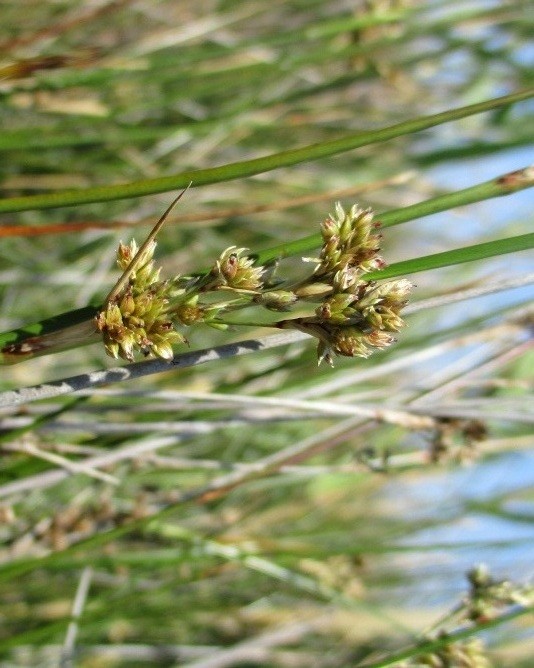Edgar's rush
(Juncus edgariae)

Description
Juncus edgariae is a species of rush, commonly called Edgar's rush or wīwī, that is endemic to New Zealand. The species was described in 2001 by Lawrie Johnson and Karen Wilson. It had previously been confused with Juncus gregiflorus, which is now considered endemic to Australia. The species name edgariae is in honour of New Zealand botanist Elizabeth Edgar. Juncus edgariae is the most abundant rush species in New Zealand, and is widespread throughout, including the Kermadec and Chatham Islands. Found commonly from between the coast to the hills, it is usually located in open shrubland, seasonally wet places or around the edges of wetlands. It has been introduced to Britain. Juncus is a genus of monocotyledonous flowering plants, commonly known as rushes. It is the largest genus in the family Juncaceae, containing around 300 species. Rushes of the genus Juncus are herbaceous plants that superficially resemble grasses or sedges. They have historically received little attention from botanists; in his 1819 monograph, James Ebenezer Bicheno described the genus as "obscure and uninviting". The form of the flower differentiates rushes from grasses or sedges. The flowers of Juncus comprise five whorls of floral parts: three sepals, three petals (or, taken together, six tepals), two to six stamens (in two whorls) and a stigma with three lobes. The stems are round in cross-section, unlike those of sedges, which are typically somewhat triangular in cross-section. In Juncus section Juncotypus (formerly called Juncus subg. Genuini), which contains some of the most widespread and familiar species, the leaves are reduced to sheaths around the base of the stem and the bract subtending the inflorescence closely resembles a continuation of the stem, giving the appearance that the inflorescence is lateral. Juncus has a cosmopolitan distribution, with species found throughout the world, with the exception of Antarctica. They typically grow in cold or wet habitats, and in the tropics, are most common in montane environments. Several fossil fruits of a Juncus species have been described from middle Miocene strata of the Fasterholt area near Silkeborg in Central Jutland, Denmark.
Taxonomic tree:







